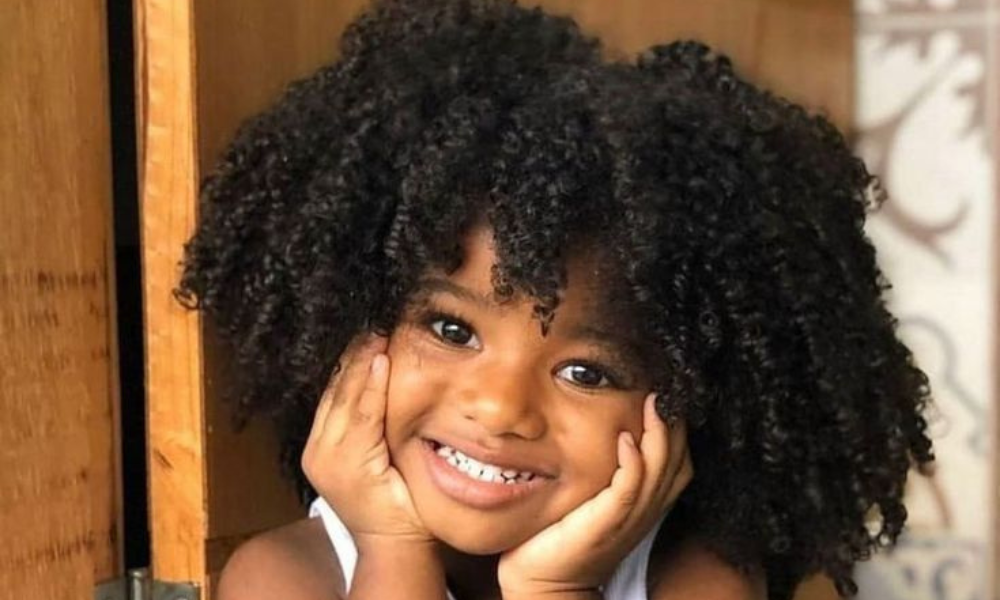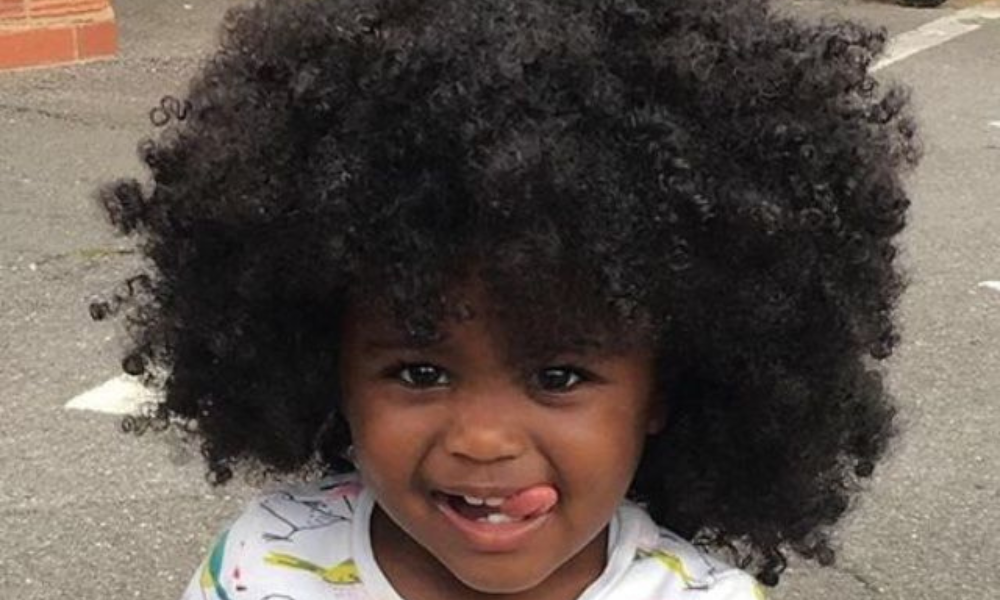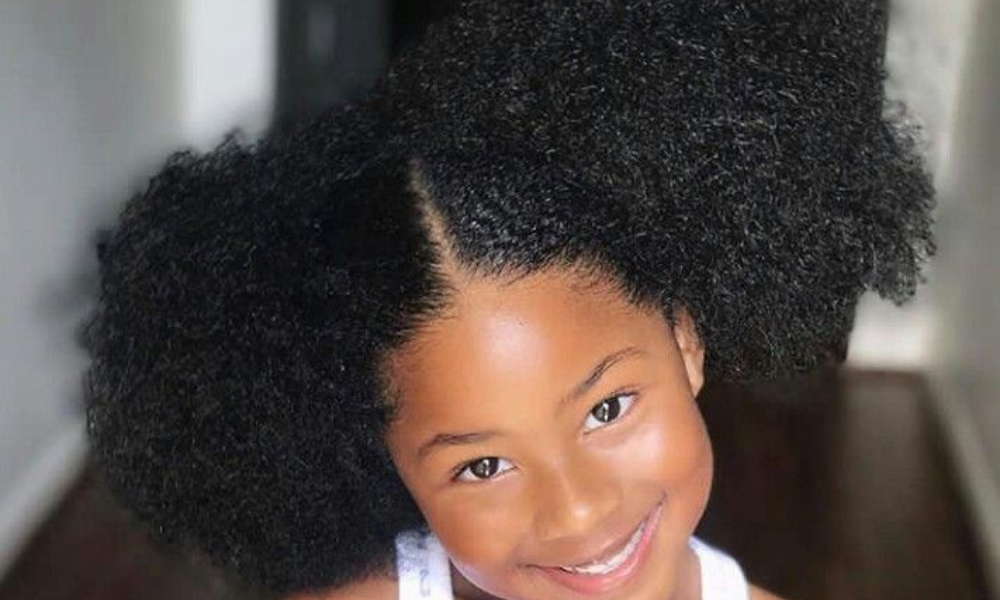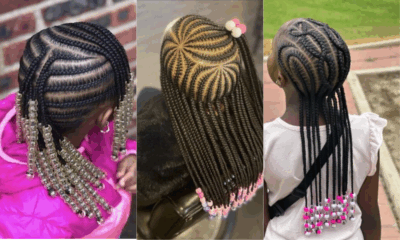HAIR CARE
The Best Afronista Hair Care Routine for Every Hair Type

Did you know that human hair is categorized into four main types? Whether your hair is straight, wavy, curly, or coily, each type requires a unique hair care routine to maintain its health and vibrancy. Factors such as texture, density, porosity, and thickness all play a crucial role in determining Afronistato hair care.

This guide will help you identify your hair type and create the ideal routine for nourished, healthy hair.
ALSO READ: Protect Black Kids’ Hair from Chlorine Damage
Identify Your Curl Pattern
Here’s a clear table comparing the different hair types and their characteristics:
Hair Type Description Subcategories Characteristics Type 1: Straight Hair Hair has no natural curl pattern and lays flat. 1A: Very fine, soft, and silky with little volume.
1B: Slightly thicker with somebody.
1C: Coarse, thick, and resistant to curling.Naturally shiny due to how easily oil travels down the strand. Prone to getting greasy quickly. Type 2: Wavy Hair Hair has an “S” shape with light to defined waves. 2A: Loose, barely-there waves, fine texture.
2B: More defined waves with some frizz.
2C: Thick, well-defined waves prone to frizz and some curls forming.Has a mix of straight and curly characteristics. Can be frizzy and needs moisture control. Type 3: Curly Hair Hair forms well-defined curls with a springy shape. 3A: Loose, large curls with shine.
3B: Tighter, bouncier curls with more volume.
3C: Corkscrew curls with lots of volume and shrinkage.Prone to dryness and frizz. Needs hydration and curl-enhancing products. Type 4: Coily/Kinky Hair Hair has tight coils or zigzag patterns with high shrinkage. 4A: Defined, springy coils that form an “S” shape.
4B: Z-shaped, less-defined curls with a cotton-like feel.
4C: Very tight, dense coils with the most shrinkage and minimal curl definition.The most fragile hair type, highly prone to dryness and breakage. Requires heavy moisture and gentle handling.
ALSO READ: Best Hair Care Products for Black Kids’ Hair

What is your hair Porosity
Low Porosity
Hair with low porosity has tightly closed cuticles, making it resistant to absorbing moisture. This means water tends to bead up on the surface of the hair, and products may sit on top rather than penetrating the strands.
People with low-porosity hair may find that their hair takes longer to get wet or absorb products. Although this type of hair is often shiny and smooth, it can also be prone to buildup, as products can easily accumulate without properly absorbing.
Recommended Items
Medium (Normal) Porosity
Hair with medium or normal porosity has a balanced structure where the cuticles are neither too tightly nor too loosely packed. This allows moisture to be absorbed at a steady rate, meaning the hair is more manageable and retains moisture without too much effort.
People with medium porosity hair often find that most hair products work well for them, and their hair responds well to different treatments, maintaining both its strength and flexibility.
Recommended Items
High Porosity
High porosity hair has more open or damaged cuticles, which means it absorbs moisture quickly but also loses it just as easily. As a result, this hair type can be more prone to dryness and frizz. High porosity hair often feels rough or bumpy when you run your fingers along a strand.
While it may take less time for high-porosity hair to get wet or absorb water, it can be difficult to maintain moisture balance without using heavier or more nourishing products.
ALSO READ: 10 Common Black Kids’ Hair Problems & Fixes
Recommended Items
Here’s a table that helps differentiate hair porosity types based on various tests:
| Test | Low Porosity | Medium Porosity | High Porosity |
|---|---|---|---|
| Float Test | Hair floats on the surface. | Hair stays in the middle of the glass. | Hair sinks to the bottom. |
| Strand Test | Strand feels smooth with little texture. | Strand feels somewhat smooth with slight texture. | Strand feels rough or bumpy. |
| Spray Bottle Test | Water beads up on the hair. | Water slightly absorbs. | Water absorbs quickly into the hair. |
| Absorption Test | Takes longer to absorb water. | Absorbs water at a normal rate. | Absorbs water quickly. |
| Showerhead Test | Takes longer to get wet, may need rubbing water in. | Gets wet in a normal time. | Gets wet quickly. |
This table highlights the key differences between low, medium, and high porosity hair based on the results from common hair porosity tests important for hair care.



ALSO READ: Understanding Black Kids’ Hair

Natural Hair Growth and anti-breakage Routine
Recommended Items
HAIR CARE
Top 3 Causes of Afronista Dry Hair In Black Kids

Dry hair in Black Kids can be a frustrating problem, especially for Black children, whose hair texture is naturally more delicate and prone to moisture loss. Dry hair refers to hair that feels rough, brittle, or crispy, but it isn’t necessarily lacking moisture.
In fact, hair that appears dry often contains excess water, which causes the outer cuticle layer of the hair to lift, leading to a rougher texture. When the hair loses moisture, the cuticles lay flat, making the hair feel softer and smoother. So, dry hair is essentially hair that experiences a disruption in its moisture balance, leading to a rough texture and more friction.

The three main culprits of dry hair in Black Kids are moisture loss, damage, and scalp buildup. Understanding these causes is the first step toward restoring your child’s hair to its soft, smooth, and shiny state. In this post, we’ll not only explore the reasons behind dry hair in Black kids but also provide effective solutions and hair care tips to repair and prevent further damage. Whether it’s choosing the right moisturizing products or adopting healthier hair care practices, you’ll find the tools you need to bring back that healthy shine.
ALSO READ: The Best Hair Care Routine for Every Hair Type
Moisture loss
Moisture loss in kids’ hair can happen for many reasons, including the weather, hair care habits, and even health. If the air is dry or the sun is too strong, it can take away the hair’s natural moisture, making it feel rough and brittle. Swimming in pools with chlorine or in salty ocean water can also dry out hair.
Washing hair too often, using strong shampoos, and too much heat from blow dryers or straighteners can make it harder for hair to stay soft and healthy. If kids get their hair colored or treated with chemicals, it can also weaken the hair. Curly hair, which is common in many kids, tends to lose moisture faster because of its shape.

ALSO READ: 10 Common Black Kids’ Hair Problems & Fixes
Best moisturizing techniques for Black kids’ hair
Staying hydrated, eating healthy foods, and using gentle, moisturizing your kids hair using LOC or LCO method.
Feature LOC Method LCO Method Order of Application Liquid → Oil → Cream Liquid → Cream → Oil How It Works Liquid hydrates, oil locks moisture, cream seals Liquid hydrates, cream moisturizes, oil seals Best For High porosity hair (open cuticle, loses moisture quickly) Low porosity hair (tight cuticle, struggles to absorb moisture) Sealing Step Cream seals moisture Oil seals moisture Moisture Retention Focuses on sealing moisture quickly Focuses on deeper penetration for better retention Key Benefit Ideal for hair that loses moisture fast Ideal for hair that struggles to absorb moisture Effectiveness Helps lock in hydration with heavier cream Enhances moisture penetration with cream first
ALSO READ: 8 Natural Remedies To Combating Hair Loss in Black Kids
Best moisturizing Techniques for Black kids’ hair
Recommended Items
Damage Hair
Black kids’ hair is naturally delicate and more prone to damage if not properly cared for. Overbrushing can weaken the hair strands, especially if done with the wrong tools or too harshly. Heat styling tools like flat irons, curling irons, and blow dryers can strip the hair of its natural moisture, leading to dryness and breakage. Chemical treatments such as relaxers, perms, or bleach can weaken the hair shaft, making it more fragile.

Overwashing with harsh shampoos can strip the hair of its natural oils, leaving it dry and brittle. Even daily activities like drying hair too roughly with a towel or the tension from sleeping without a satin bonnet or pillowcase can contribute to damage. When the protective cuticle layer is lifted or broken, moisture escapes, making the hair feel dry, frizzy, and prone to breakage. Proper hair care, gentle handling, and using moisturizing products can help protect Black kids’ hair and keep it healthy.
How To Prevent Dry Hair In Black Children
Recommended Items
Scalp buildup
Scalp buildup and dryness are two separate but interconnected issues that can affect hair and scalp health. Scalp buildup occurs when sebum, dead skin cells, sweat, and hair products accumulate on the scalp, potentially clogging hair follicles and leading to irritation or inflammation. This buildup can also trap irritants, making the scalp more susceptible to dryness.
In an attempt to remove buildup, some people may overuse harsh shampoos or cleansing products, which can strip the scalp of its natural oils, leading to further moisture loss. Unlike buildup, a dry scalp is primarily caused by a lack of hydration due to factors like cold weather, low humidity, aging, or the use of drying hair products.

While buildup itself doesn’t directly cause dryness, it can worsen irritation and contribute to moisture imbalance if not properly managed. To maintain a healthy scalp, it’s important to cleanse regularly without over-washing, use gentle hydrating products, and ensure the scalp stays balanced and nourished.
Effective solutions for dry hair in Black kids
ALSO READ: Best hair styles For dry hair girls
Hair Product Recommendation For Black Girls With Dry Hair
Shampoo
Conditioner
Anti-Dandruff
HAIR CARE
10 Common Afronista Hair Problems & Fixes

Afronista Hair Problems can be an issue facing lots of black girls in the community. Hair is a huge part of our identity, and for many Black kids and girls, it’s a significant expression of culture, beauty, and pride. From beautiful coils to glorious curls, having healthy, strong hair boosts confidence and self-esteem. However, hair problems can be frustrating, especially when you’re not sure where to turn for the best solutions.
Whether it’s dryness, frizz, breakage, or damage from heat, many hair challenges can feel overwhelming. But don’t worry—if you’ve been struggling with your hair, you’re not alone, and there’s hope! In this blog post, we’ll explore the most common hair issues faced by Black kids and girls and offer practical solutions to restore your hair’s health and beauty.

ALSO READ: Protect Black Kids’ Hair from Chlorine Damage
Common hair concerns for Black kids and how to address them
1. Dry Hair is Common Afronista Hair Problems
Dry hair is a major concern for many Black kids and girls. Your natural curls or coils need moisture to thrive, and when they lack hydration, they can become brittle and break easily. Dryness can result from overwashing, heat styling, environmental factors, or even hormonal changes.
How to Fix It:
Focus on deep hydration by using moisturizing shampoos and conditioners designed for textured hair. Opt for oils such as argan or jojoba, which help lock in moisture. Protective styling can also help minimize moisture loss. Always hydrate your hair with a leave-in conditioner or hydrating serum after washing. And remember, try not to wash your hair too often—once or twice a week is generally best for most hair types.
Recommened Items
2. Frizz Common Afronista Hair Problems & Fixes
Frizz is a common issue, especially when humidity is high or your hair is dry. When your strands lack moisture, they absorb moisture from the air, causing them to puff up and become unruly.
Recommened Items
How to Fix It:
To prevent frizz, invest in anti-frizz products like serums, oils, and creams. Opt for natural styling products without harsh chemicals that can strip your hair’s natural oils. Keep hair well-moisturized and use protective hairstyles to keep your hair smooth. Additionally, Afronista Hair Problems & Fixes suggests not to brush your hair when it’s dry; use a wide-tooth comb to detangle it while it’s still damp.



3. Heat DamageCommon Afronista Hair Problems & Fixes
Heat styling is popular for many Black girls, but when done incorrectly, it can leave your curls weak and lifeless. Frequent use of hot tools like flat irons or blow dryers without proper protection can result in heat damage.
How to Fix It:
Protect your hair from heat damage by always applying a heat protectant before styling. When using heat tools, make sure to keep the temperature low and avoid using them on wet hair, as this can cause even more damage. For recovery, consider using moisturizing treatments, deep conditioners, and protein-rich masks to repair your curls.
4. Oily Scalp Common Afronista Hair Problems & Fixes
An oily scalp can be caused by overproduction of sebum. Ironically, washing your hair too often can cause your scalp to produce more oil as a defense mechanism. This can lead to greasy roots and clogged hair follicles.
How to Fix It:
Don’t wash your hair every day—washing it too often strips your scalp of its natural oils, triggering more oil production. Use dry shampoo between washes to soak up excess oil. Gentle, sulfate-free shampoos can also help cleanse without over-drying
ALSO READ: Best Hair Care Products for Black Kids’ Hair
5. Breakage and Split Ends Common Afronista Hair Problems & Fixes
Breakage and split ends often occur when your hair lacks moisture or is subjected to rough handling, heat styling, or over-processing. Regular trims and proper care are essential to keeping hair healthy.
Recommened Items
How to Fix It:
Trim your ends regularly to prevent split ends from traveling up the hair shaft. Use a heat protectant and moisturizing products to minimize breakage. Additionally, be gentle when detangling your hair—use a wide-tooth comb and avoid pulling or tugging on the hair. Incorporate hydrating oils like castor oil to keep strands strong.

6. Slow Hair Growth Common Afronista Hair Problems & Fixes
Hair growth can vary from person to person, but it’s common for Black girls to feel like their hair isn’t growing fast enough. Stress, diet, and damage can slow down growth.
Recommended Items
How to Fix It:
Maintain a balanced diet rich in proteins, vitamins, and minerals to support hair growth. Consider using hair growth oils such as rosemary oil or castor oil. Protect your hair from damage with proper care and gentle handling. Regular scalp massages can also promote blood flow to your follicles, encouraging growth.
ALSO READ: The Best Hair Care Routine for Every Hair Type
7. Dandruff Common Afronista Hair Problems & Fixes
Dandruff is common for Black kids and girls, especially during colder months. It often occurs due to dry skin or an oily scalp, which can lead to flakes and itching.
How to Fix It:
Keep your scalp moisturized with gentle shampoos that hydrate the scalp. Look for dandruff shampoos with tea tree oil or salicylic acid to reduce flakiness. Keep your scalp clean, but avoid harsh, drying treatments that can make the issue worse. Moisturizing oils like coconut oil can help soothe an itchy scalp.
Recommened Items
8. Color-Damaged Common Afronista Hair Problems & Fixes
While color treatments can give you a bold new look, they can also damage your hair by stripping it of its natural moisture and causing breakage.
How to Fix It:
If you’ve colored your hair, be sure to use shampoos and conditioners specifically formulated for color-treated hair. These products help lock in color and moisture while preventing dryness. Limit the use of heat styling and treat your hair with deep conditioning masks regularly to restore hydration.
Recommened Items
9. Hair Loss Common Afronista Hair Problems & Fixes
Recommened Items
Hair loss can be caused by a range of factors, from genetics to stress, medication, and hormonal changes. If you’re experiencing hair loss, it can be frustrating and emotional.
How to Fix It:
If you’re experiencing hair loss, it’s important to visit a dermatologist to rule out any medical causes. Make sure your diet supports healthy hair growth, and try not to put too much strain on your hair with tight hairstyles or excessive heat. You can also use growth oils like Jamaican black castor oil to stimulate hair regrowth.
ALSO READ: Understanding Black Kids’ Hair
10. Premature Greying Afronista Hair Problems & Fixes
Premature greying is often genetic, but it can also be linked to stress, nutrition, and oxidative stress. Although there is no way to reverse grey hair, there are ways to manage it.
How to Fix It:
If you embrace the grey, consider using moisturizing hair care products to keep your hair strong and healthy. If you want to cover the greys, opt for natural hair dye products that won’t damage your hair. Eating a balanced diet and reducing stress can help slow down the greying process.
Recommened Items
Conclusion
These 10 Common Afronista Hair Problems should be important to be put into perspective to have quality hair. No matter which hair issue you face, the key is understanding the root causes and addressing them with the right products, routines, and lifestyle changes. With the right care, your hair can thrive and stay healthy, beautiful, and full of life. Remember that every hair type is unique, and it’s important to treat your hair with love and care. Embrace your natural beauty and let your hair be a reflection of your strength
HAIR CARE
How To Protect Your Black Kids’ Hair While Swimming

Swimming is fantastic, but we should also ensure Black Kids’ Hair stays Strong. Healthy hair helps her build confidence and have fun at the same time.
However, for Black children, regular exposure to chlorinated water can lead to extreme dryness, breakage, Tangles and even texture changes. Black hair, particularly coily and curly textures, thrives on moisture, but chlorine strips away natural oils, making hair vulnerable to damage.
The good news? With a simple yet effective hair care routine, you can protect your child’s hair from chlorine damage and keep it healthy and hydrated throughout their swimming lessons. This guide covers the best pre-swim, during-swim, and post-swim care practices to prevent breakage and retain moisture.
ALSO READ: Best Hair Care Products for Black Kids’ Hair
How to Protect Your Black Kids’ Hair from Chlorine
Before Swimming
- Rinse Hair with Fresh Water:
- Wetting your child’s hair with clean water before swimming reduces its ability to absorb chlorinated water.
- Apply a Protective Barrier:
- Use a leave-in conditioner, coconut oil, or shea butter to create a moisture-sealing layer over the hair.
- Opt for a silicone-based leave-in conditioner, which acts as a protective shield against chlorine.
- Style Hair in Protective Hairstyles:
- Loose hair absorbs more water and is harder to detangle later. Secure hair in braids, twists, or buns to minimize chlorine exposure.
- Use a Swim Cap:
- A well-fitting swim cap (preferably a silicone cap) offers an additional layer of protection. While it may not keep hair 100% dry, it significantly reduces direct chlorine exposure.
ALSO READ: 10 Common Black Kids’ Hair Problems & Fixes
During Swimming
- Encourage Minimal Submersion:
- If possible, have your child keep their head above water for most of the lesson to reduce prolonged exposure.
- Adjust Swim Cap When Needed:
- If water gets in, take a moment to adjust the cap for a better seal.
After Swimming
- Rinse Immediately with Fresh Water:
- As soon as the swim session is over, rinse your child’s hair with clean water to remove as much chlorine as possible.
- Use a Gentle Shampoo:
- Wash with a sulfate-free, moisture-rich shampoo or a chlorine-removing shampoo to prevent buildup.
- Limit shampooing to once or twice a week to avoid stripping the hair of natural oils.
- Deep Condition the Hair:
- Follow up with a hydrating conditioner to restore lost moisture.
- Use a deep conditioning treatment once a week, especially if your child swims frequently.
- Detangle Gently:
- Use a wide-tooth comb or a detangling brush while the hair is damp.
- Apply a detangling spray or leave-in conditioner to ease knots and prevent breakage.
- Seal in Moisture:
- Apply a lightweight oil (such as coconut, jojoba, or argan oil) to lock in hydration.
ALSO READ: Understanding Black Kids’ Hair
Weekly Maintenance for Swimmers
1. Deep Conditioning Treatment
Once a week, apply a rich deep-conditioning mask or a DIY coconut oil treatment for added moisture.



2. Apple Cider Vinegar Rinse (Optional)
For children with buildup, mix 1 part apple cider vinegar with 4 parts water and use it as a final rinse before conditioning. This helps remove chlorine residue and restore hair’s natural shine.
3. Protective Night time Routine
Have your child sleep with a satin or silk bonnet or pillowcase to retain moisture. Reapply a light leave-in conditioner or moisturizing spray if their hair feels dry.
ALSO READ: The Best Hair Care Routine for Every Hair Type
Final Thoughts
Swimming is a fantastic activity, and with the right haircare routine, Black parents can ensure their child’s hair stays healthy and strong. By using protective styles, moisture-sealing products, and proper cleansing techniques, you can prevent breakage and keep their hair looking and feeling great.
So let your little one enjoy their swim lessons with confidence—without the hair worries!
-

 KIDS HAIRSTYLES5 months ago
KIDS HAIRSTYLES5 months ago30 Easy and Adorable Back to School Hairstyles For Kids
-

 KIDS HAIRSTYLES2 months ago
KIDS HAIRSTYLES2 months ago20 Back to School Hair style for Black Kids hair
-

 WEDDING9 months ago
WEDDING9 months ago30 African Wedding Dresses That’ll Leave Everyone Speechless!
-

 MEN HAIRSTYLES11 months ago
MEN HAIRSTYLES11 months ago20 Best Back to School Hair Cut For black kids





















